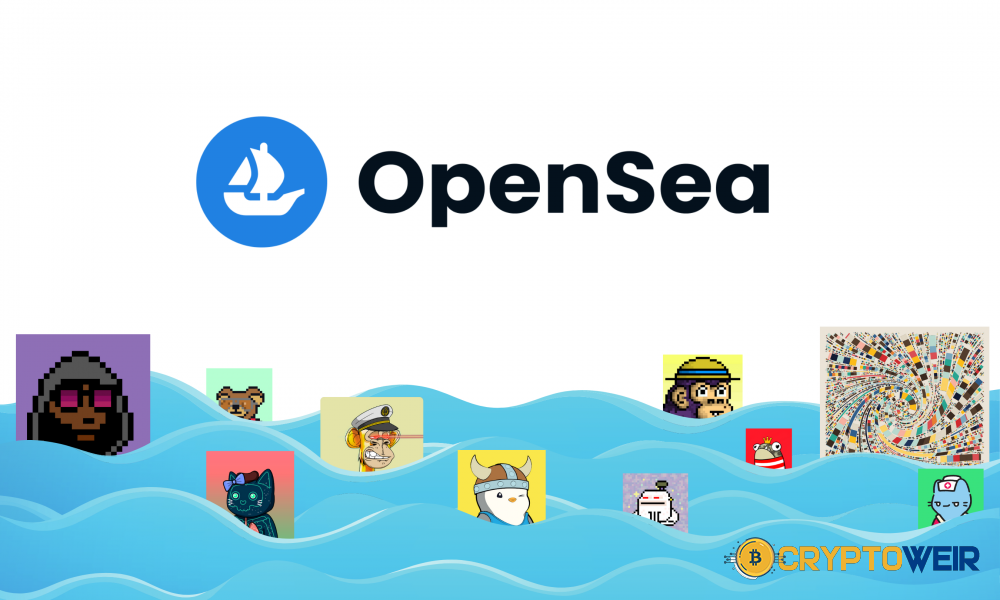OpenSea is Just an Example of Why Crypto Security must be Improved.

OpenSea fell victim to a significant phishing attack in February 2022, resulting in the theft of roughly $1.7 million worth of nonfungible tokens (NFTs) from its customers. In 2022, Blockchain users reportedly lost $3.9 billion due to fraudulent behavior.
As 2023 began, there was a chorus of promises that Officials would improve crypto security. However, things have mostly stayed the same thus far. Still, blockchain-using businesses are not doing enough to avoid fraud.
If blockchain technology is going to be used by a lot of people, businesses will have to change their strategies from the bottom up. As the market grows, these platforms may be able to better serve their users by putting more emphasis on education and improving their methods for spotting bad behavior.
Blockchain Platforms Need to Learn How to Identify Malicious Activity.
During the OpenSea hack, which was requested by the platform, people were asked to sign an incomplete contract. Even though OpenSea’s primary infrastructure was not compromised, the fraudulent accounts could use the open-source Wyvern Protocol. Then, hackers could transfer the owner’s signature to a bogus contract that gave them ownership of the NFTs without paying for them.
Following accusations that 80% of the free NFTs generated on the website were plagiarised or spam, OpenSea has modified crypto security and some of its previous policies. OpenSea also depends on developers utilizing its API for risk assessment, which could be more foolproof. These developers may abuse the API to exploit those who sign contracts without reading them.
Read More: https://cryptoweir.com/how-do-smart-contracts-work/
Smart contracts are a fundamental component of the blockchain and can be found everywhere, from NFT exchanges to decentralized apps in their purest form. Understanding how these contracts operate is essential for user security. Instead of recreating the wheel, businesses can apply standard protocols to assure the resilience and security of smart contracts. From there, companies can utilize the blockchain’s adaptability and personalize their contracts by establishing multi-signature wallets and conducting routine unit testing.
Beware of the spammy airdrop.
If you look in OpenSea’s top collections for the popular Mutant Hounds collection, there is no way to tell which group is honest. Lack of verification can create fake collections, whose prices are jacked up to make them look authentic and confuse users. The search function on an NFT platform is often used to find counterfeit groups sent out as airdrops.
Spammy collections can also use airdrops to send NFTs to users who didn’t ask for them. They will send Users to a different site instead of the platform where they have a collection, like OpenSea, where the scam takes place.
This common risk can be fixed by platforms that keep an eye on this kind of activity, either with a crowdsourced database that keeps track of fake accounts or with an administrative tool that knows what to look for and is always aware of new scams. Also, NFT platforms can ask that bids be made in the same currency as the listing to avoid confusion. Many people have been tricked by scammers when they accepted an offer in a coin worth less than the one they listed in the NFT for sale. Blockchain platforms can use data to find outliers by flagging suspicious activity based on a small number of holders doing things that don’t fit the norm.
Of course, it’s important to note that it’s hard for companies like OpenSea to stop fake accounts from making money on their platform. Most of the time, it comes down to the fact that the official collection needs to be checked more.
Onboarding is an integral part of the business plan.
Veteran and rookie blockchain users need onboarding. Like intelligent contracts, creating explicit user rules and exposing potential hazards is a crucial best practice for user safety. As blockchain grows, these guides should be risk-assessed and updated.
Experienced blockchain users utilize “DYOR” often. The abbreviation “do your own research” is an unsaid rule for investors. Newcomers may need help figuring out where to start. Influencers often promote the next great thing and risky investments, which leads to scams and wealth loss. Guidelines and teaching materials tailored to each platform’s values and dangers should be offered.
Best practices should be a priority for all blockchain platforms.
As the blockchain community goes through growing pains, companies should learn from powerful hacks like the ones on OpenSea improve their crypto security protocols to ensure that doesn’t happen again. The first step should be learning the ins and outs of basic technology, like smart contracts, and keeping your seed phrase safe. From there, you can learn how to put and support best practices in place, such as figuring out who is doing bad things or causing trouble. Some of the most recent large-scale hacks might have been stopped if someone had just noticed something didn’t seem right.





